
Via Veloce by Wille R. www.veloce.se since November 1995 and still here.
Alfa Romeo Duetto 1966 - 1969 FAQ --![]()
For the first time the 1750 Spider Veloce was produced in a separate series especially for the United States of America, and even had its own chassis prefix (105.62). The reasons for this were clear: encroaching safety and emissions legislation in the USA made American-market cars significantly different to European and other worldwide market cars. It set the tone for future editions of the Spider, and demonstrated the importance that Alfa Romeo rightly attached to the US market – the Spider’s single biggest market.
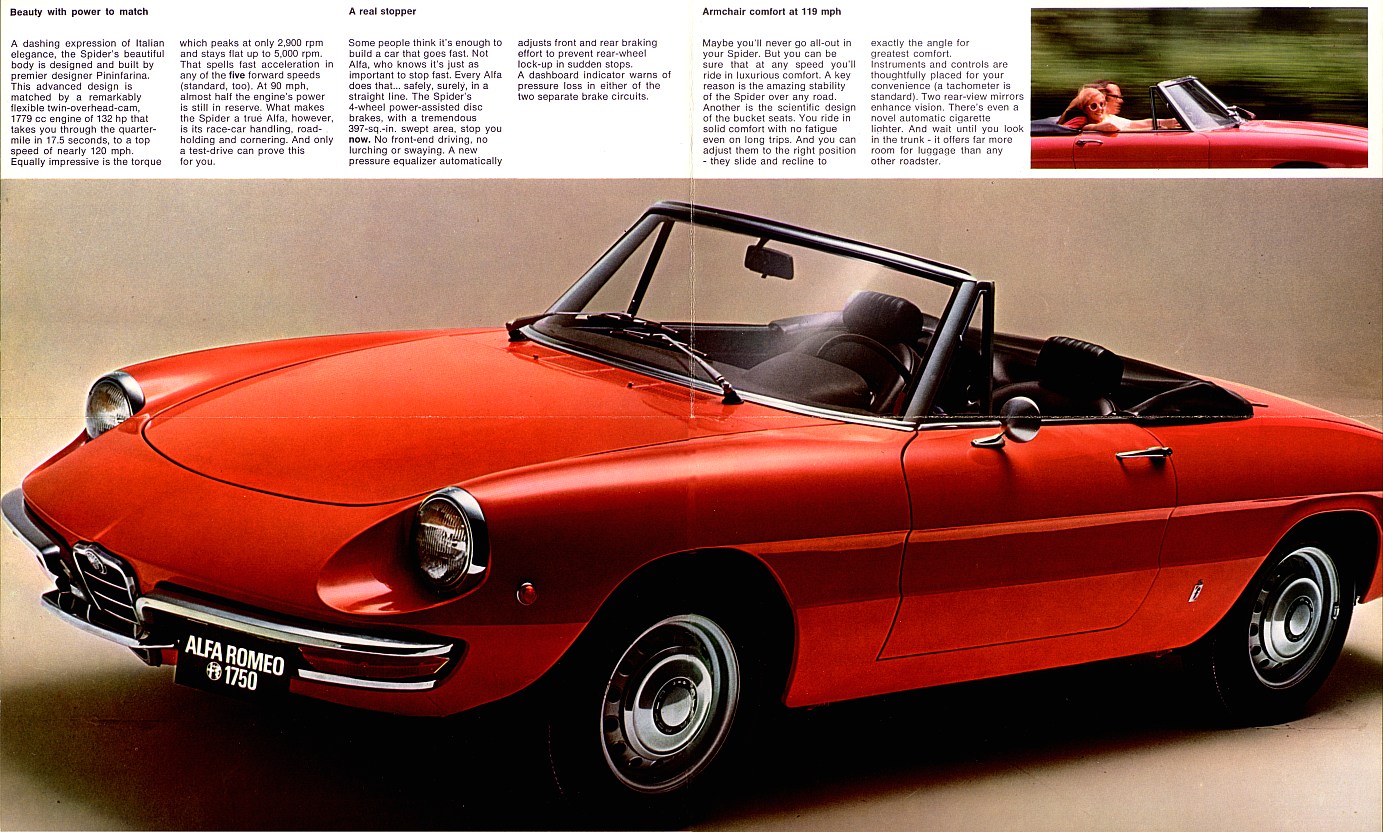
There was no 1968-model year Spider because Alfa Romeo was unprepared for the new Federal emissions regulations, the 1969 model finally arriving on 18 February 1969.
Probably the single most important difference on the US Spider 1750 Veloce was its incorporation of Spica mechanical fuel injection as a fop to emissions regulations. See MAY 1969 CAR & DRIVER. This system originated as an injection system for diesel trucks but, despite this humble origin, it was a lot more sophisticated and more expensive to produce than other manufacturers’ solutions to the emissions problem. In fact Alfa Romeo had planned to offer Zenith carburetors, as an option to fuel injection, but this never materialised.
The Spica injection pump was a four-plunger high-pressure item that also metered the fuel and provided the high-pressure delivery (between 260 and 300 psi). Unlike Bosch, which relied on springs and cams, the Spica pump had a small crankshaft and four connecting rods to provide a full desmodromic action for the plungers. The fuel injection pump was mounted directly on to the engine and was also lubricated by the engine oil. The fuel pump was electronic and mounted next to the fuel tank.
The dash had a red control light for the SPICA system. The European version did not.
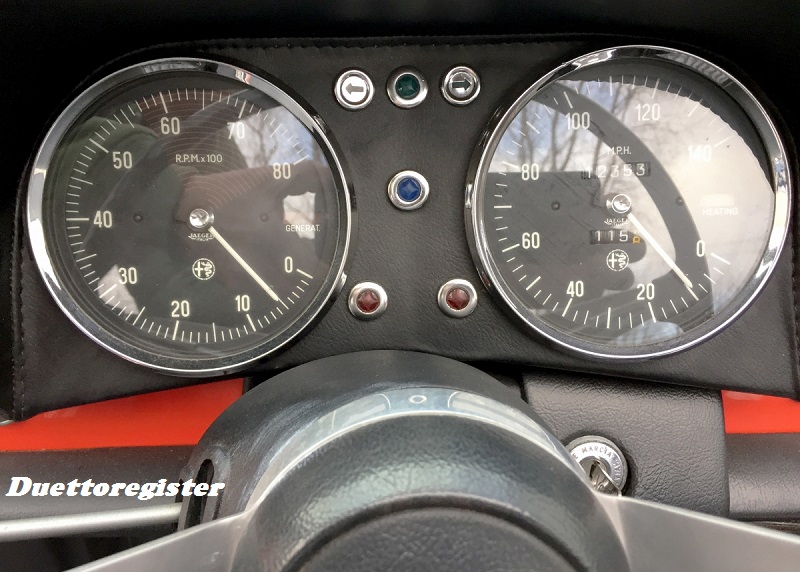
The injection system contained a purely mechanical brain whose operations centred on a cam. When the accelerator was depressed, one link opened the throttles and another relayed the information to the fuel injection pump by rotating the cam. Engine speed information was provided by means of six steel balls that turned inside a cup-shaped retainer and swung out due to centrifugal force. When the balls moved out, they displaced the cam lengthways, regardless of accelerator position. A pick-up stylus followed the contour of the cam and relayed its motion to the fuel delivery control. The fuel injection pump was also fitted with an aneroid that responded to air pressure and also a thermostat controlled by the engine's cooling temperature.
The fuel injection was timed to correspond with the intake stroke. The end of the ram pipes was enclosed in a plenum chamber large enough to eliminate any unwanted turbulence. The plenum served as an air cleaner housing with a long round two-piece element. The idle system consisted of a pair of separate adjustable air jets.
The temperature compensating lever was designed to keep the fuel/air ratio even according to the seasons, and had three settings: N (normal) for ambient temperatures above 59oF, C (cold) for temperatures between 32oF and 59oF, and F (freezing) for temperatures below 32oF. The idea of a manually adjustable cold start enrichment valve (hand throttle) persisted in the fuel-injected 1750. Lodge HL spark plugs were the standard fitment but Alfa Romeo recommended the fitment of Lodge 2HL plugs if national speed limits were going to be exceeded – apparently Alfa recognized that not everyone was going to stick to the preposterous 55mph limit… The badging was also different. I think the European script looks better.

Compared to the 1600 engine, the fuel-injected 1779cc unit boasted increased torque of 137lb ft at 2800rpm (quoted gross in America, as ever) and also increased power (132bhp gross at 5500rpm). When translated into net terms, we can see that American drivers had to put up with less power than European 1750 Veloce drivers: at 115bhp net, the power output was some 7bhp less than the carburettor 1750 engine. Compared to the 1600, there was also criticism in the American press that throttle response had suffered as a result of the injection system.
American Spiders had a different water pump and a two-stage Fispa fuel filter. The air filtering was also entirely different to suit the Spica injection system, using twin cylindrical filters in a long, D-shaped canister with the ducting incorporated into the clip-on end. It bore a sticker with the legend ‘1750 INIEZIONE SISTEMA ALFA ROMEO SPICA’.
Strangely, Alfa Romeo opted to keep the shorter 4.555:1 final drive instead of the 4.3:1 (or 4.1:1??) ratio fitted in Europe, but the limited-slip differential option was still available.
American 1750 Spiders were fitted with the deeply dished steering wheel shared with the 1750 GTV. This did not have a wooden rim, as did European Spiders, but a black plastic rim and sometimes a plain centre boss without an Alfa Romeo badge, sometimes a boss with a badge. The triple horn pushes were smaller also. Other small differences included a service brake warning light to the far side of the radio cover panel and an extra warning light directly between the major dials (for low fuel pressure in the injection system). There was also no need of a manual choke knob, so only a hand throttle control was fitted on US cars. American cars were fitted with a hazard warning flasher circuit, the switch for which was sited below the heater controls. Seat belts were fitted but only lap belts rather than three-point belts.
American cars also boasted standard headrests with a ribbed pattern that were adjustable for height. These inserted into holes in the tops of the seats, which were otherwise identical to European-specification seats. Different upholstery (imitation pigskin)? C&S Sep93 p59
Externally there were several significant differences in the American Spider. Most obvious perhaps were the curious bumper extensions front and rear, added to satisfy the safety regulators. At the front, a chrome-plated bar joined the standard two-piece bumpers together (bolted through the lower bumper bars and obscuring the Alfa Romeo shield grille). At the rear there was another fill-in bar, essentially an arcing tube, over the rear numberplate slot (although not all Spiders appear to have had this fitted). Overall the bumper extensions added around five inches? (13cm)? to the total length of American Spiders. There were also front double numberplate mounting brackets designed to fit on the lower bumper bar.
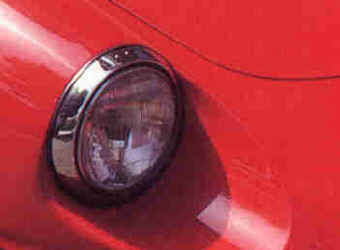
Another external difference was the fitment of orange round repeater lights on the flanks (front and rear). Unlike European cars, which had their repeater lights mounted aft of the front wheel arch, US cars had theirs in front of the wheel arch; each rear repeater light was in a corresponding position at the extreme end of the body side indent.
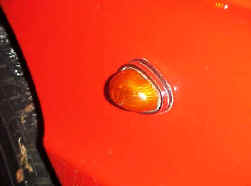
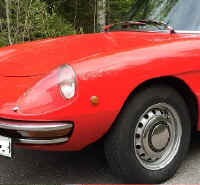
Teardrop shaped side repeaters looked nice and they were only on the 1600 Duetto and early 1750 Veloce cars, European versions. The left photo shows the teardrop. If the fender has been changed and repaired, it is likely to have the indicator at the front of the wheel. Late 1750 Veloce Euro cars had the indicator in front like this, so did the US 1750 cars too. It's an easy way to see if a 1600 Duetto has been repaired.
A new 'Iniezione' script badge towards the lower right hand corner of the boot lid identified the installation of Spica fuel injection on some, but apparently not all, American Spiders. There was either the same simple ‘1750’ script below the boot-mounted Alfa badge as on European-specification cars, or ‘ALFA ROMEO’ script in capitals in the same location.
Once again American Spiders were not fitted with Perspex headlamp cowls, instead making do with chrome bezels around the headlamps. It should be mentioned that these are not the same bezels as were fitted to European Junior models, which were much thinner. The tool kit for Americans was apparently denuded, consisting of a plug spanner, plug Tommy bar, pliers, screwdriver, Phillips screwdriver and brace.
The wheel size in America was, like Europe, 14 x 5˝J fitted with either the wide-black-band hubcaps or narrow-band type hubcaps. The choice of Pirelli or Michelin tyres was supplemented by the addition of Kleber Colombes.
There was no 1970 model year Spider in America, as strikes in Italy prevented serious exploitation of the market? Therefore unsold 1969 stock was carried through until the arrival of the Kamm-tail Spider for the 1971 model year, which is fully described in the following chapter. The Spider 1300 Junior was not sold in the USA.
If you have any comments, please send an E-mail
#